Homochiral Metal-Organic Framework Based Mixed Matrix Membrane for Chiral Resolution
Abstract
:1. Introduction
2. Materials and Methods
2.1. Materials
2.2. Membrane Fabrication
2.2.1. Synthesis of Microporous L-His-ZIF-8 in Methanol
2.2.2. Preparation of the Torlon® Dense Membrane
2.2.3. Preparation of the Mixed Matrix Membrane
2.3. Characterization
2.3.1. L-His-ZIF-8
2.3.2. L-His-ZIF-8/Torlon® Mixed Matrix Membrane
2.3.3. Organic Solvent Nanofiltration (OSN) Experiments
3. Results and Discussion
3.1. Chiral Filler: L-His-ZIF-8
3.2. Enantioselective L-His-ZIF-8/Torlon®
3.3. Performance Test via Organic Solvent Nanofiltration
4. Conclusions
Author Contributions
Funding
Institutional Review Board Statement
Informed Consent Statement
Data Availability Statement
Conflicts of Interest
References
- Shen, J.; Okamoto, Y. Efficient Separation of Enantiomers Using Stereoregular Chiral Polymers. Chem. Rev. 2015, 116, 1094–1138. [Google Scholar] [CrossRef] [PubMed]
- Choi, H.-J.; Ahn, Y.-H.; Koh, D.-Y. Enantioselective Mixed Matrix Membranes for Chiral Resolution. Membranes 2021, 11, 279. [Google Scholar] [CrossRef] [PubMed]
- Faigl, F.; Fogassy, E.; Nógrádi, M.; Pálovics, E.; Schindler, J. Strategies in optical resolution: A practical guide. Tetrahedron Asymmetry 2008, 19, 519–536. [Google Scholar] [CrossRef]
- Collet, A.; Brienne, M.J.; Jacques, J. Optical resolution by direct crystallization of enantiomer mixtures. Chem. Rev. 1980, 80, 215–230. [Google Scholar] [CrossRef]
- Ghanem, A.; Aboul-Enein, H.Y. Application of lipases in kinetic resolution of racemates. Chirality 2004, 17, 1–15. [Google Scholar] [CrossRef]
- Blaschke, G. Chromatographic Resolution of Chiral Drugs on Polyamides and Cellulose Triacetate. J. Liq. Chromatogr. 1986, 9, 341–368. [Google Scholar] [CrossRef]
- Lewandowski, K.; Murer, P.; Svec, F.; Fréchet, J.M.J. The Design of Chiral Separation Media Using Monodisperse Functionalized Macroporous Beads: Effects of Polymer Matrix, Tether, and Linkage Chemistry. Anal. Chem. 1998, 70, 1629–1638. [Google Scholar] [CrossRef]
- Cong, H.; Xing, J.; Ding, X.; Zhang, S.; Shen, Y.; Yu, B. Preparation of porous sulfonated poly(styrene-divinylbenzene) microspheres and its application in hydrophilic and chiral separation. Talanta 2019, 210, 120586. [Google Scholar] [CrossRef]
- Huang, S.-H.; Bai, Z.-W.; Yin, C.-Q.; Li, S.-R.; Pan, Z.-Q. Synthesis of polymer-type chiral stationary phases and their enantioseparation evaluation by high-performance liquid chromatography. Chirality 2006, 19, 129–140. [Google Scholar] [CrossRef]
- Swapnil, P.; Meena, M. The Industrial Development of Polymeric Membranes and Membrane Modules for Re-verse Osmosis and Ultrafiltration. In Membrane-Based Hybrid Processes for Wastewater Treatment; Elsevier: Amsterdam, The Netherlands, 2021; pp. 1–12. [Google Scholar]
- Seo, H.; Yun, S.; Oh, B.; Chung, Y.G.; Koh, D.-Y. Shape-Selective Ultramicroporous Carbon Membranes for Sub-0.1nm Organic Liquid Separation. Adv. Sci. 2021, 8, 204999. [Google Scholar] [CrossRef]
- Robeson, L.M. The upper bound revisited. J. Membr. Sci. 2008, 320, 390–400. [Google Scholar] [CrossRef]
- Goh, P.S.; Ismail, A.F.; Sanip, S.M.; Ng, B.C.; Aziz, M. Recent advances of inorganic fillers in mixed matrix membrane for gas separation. Sep. Purif. Technol. 2011, 81, 243–264. [Google Scholar] [CrossRef]
- Long, J.R.; Yaghi, O.M. The pervasive chemistry of metal–organic frameworks. Chem. Soc. Rev. 2009, 38, 1213–1214. [Google Scholar] [CrossRef] [PubMed]
- Tanaka, K.; Muraoka, T.; Otubo, Y.; Takahashi, H.; Ohnishi, A. HPLC enantioseparation on a homochiral MOF–silica composite as a novel chiral stationary phase. RSC Adv. 2016, 6, 21293–21301. [Google Scholar] [CrossRef]
- Corella-Ochoa, M.N.; Tapia, J.B.; Rubin, H.N.; Lillo, V.; González-Cobos, J.; Núñez-Rico, J.L.; Balestra, S.R.G.; Almora-Barrios, N.; Lledós, M.; Güell-Bara, A.; et al. Homochiral Metal–Organic Frameworks for Enantioselective Separations in Liquid Chromatography. J. Am. Chem. Soc. 2019, 141, 14306–14316. [Google Scholar] [CrossRef]
- Lee, Y.H.; Jeong, J.; Kim, K.; Hyun, T.; Jamal, A.; Koh, D.-Y. Microporous Materials in Scalable Shapes: Fiber Sorbents. Chem. Mater. 2020, 32, 7081–7104. [Google Scholar] [CrossRef]
- Park, K.S.; Ni, Z.; Côté, A.P.; Choi, J.Y.; Huang, R.; Uribe-Romo, F.J.; Chae, H.K.; O’Keeffe, M.; Yaghi, O.M. Exceptional Chemical and Thermal Stability of Zeolitic Imidazolate Frameworks. Proc. Natl. Acad. Sci. USA 2006, 103, 10186–10191. [Google Scholar] [CrossRef] [Green Version]
- Lu, Y.; Zhang, H.; Chan, J.Y.; Ou, R.; Zhu, H.; Forsyth, M.; Marijanovic, E.M.; Doherty, C.M.; Marriott, P.J.; Holl, M.M.B.; et al. Homochiral MOF-polymer mixed matrix membranes for efficient separation of chiral molecules. Angew. Chem. 2019, 58, 16928–16935. [Google Scholar] [CrossRef]
- Lee, Y.H.; Kwon, Y.; Kim, C.; Hwang, Y.-E.; Choi, M.; Park, Y.; Jamal, A.; Koh, D.-Y. Controlled Synthesis of Metal-Organic Frameworks in Scalable Open-Porous Contactor for Maximizing Carbon Capture Efficiency. JACS Au 2021, 1, 1198–1207. [Google Scholar] [CrossRef]
- Chan, J.Y.; Zhang, H.; Nolvachai, Y.; Hu, Y.; Zhu, H.; Forsyth, M.; Gu, Q.; Hoke, D.E.; Zhang, X.; Marriot, P.J.; et al. Incorporation of homochirality into a zeolitic imidazolate framework membrane for efficient chiral separation. Angew. Chem. 2018, 57, 17130–17134. [Google Scholar] [CrossRef]
- Yu, Y.; Xu, N.; Zhang, J.; Wang, B.; Xie, S.; Yuan, L. Chiral Metal–Organic Framework d-His-ZIF-8@SiO2 Core–Shell Microspheres Used for HPLC Enantioseparations. ACS Appl. Mater. Interfaces 2020, 12, 16903–16911. [Google Scholar] [CrossRef] [PubMed]
- Grogan, G. Edited by Wolf-Dieter Fessner and Thorleif Anthonsen Modern Biocatalysis: Stereoselective and Environmentally Friendly Reactions Wiley-VCH, 2008, 400 Pp £110.00/€132.00 978-3-527-32071-4 (Hardcover). Appl. Organomet. Chem. 2009, 23, 250. [Google Scholar] [CrossRef]
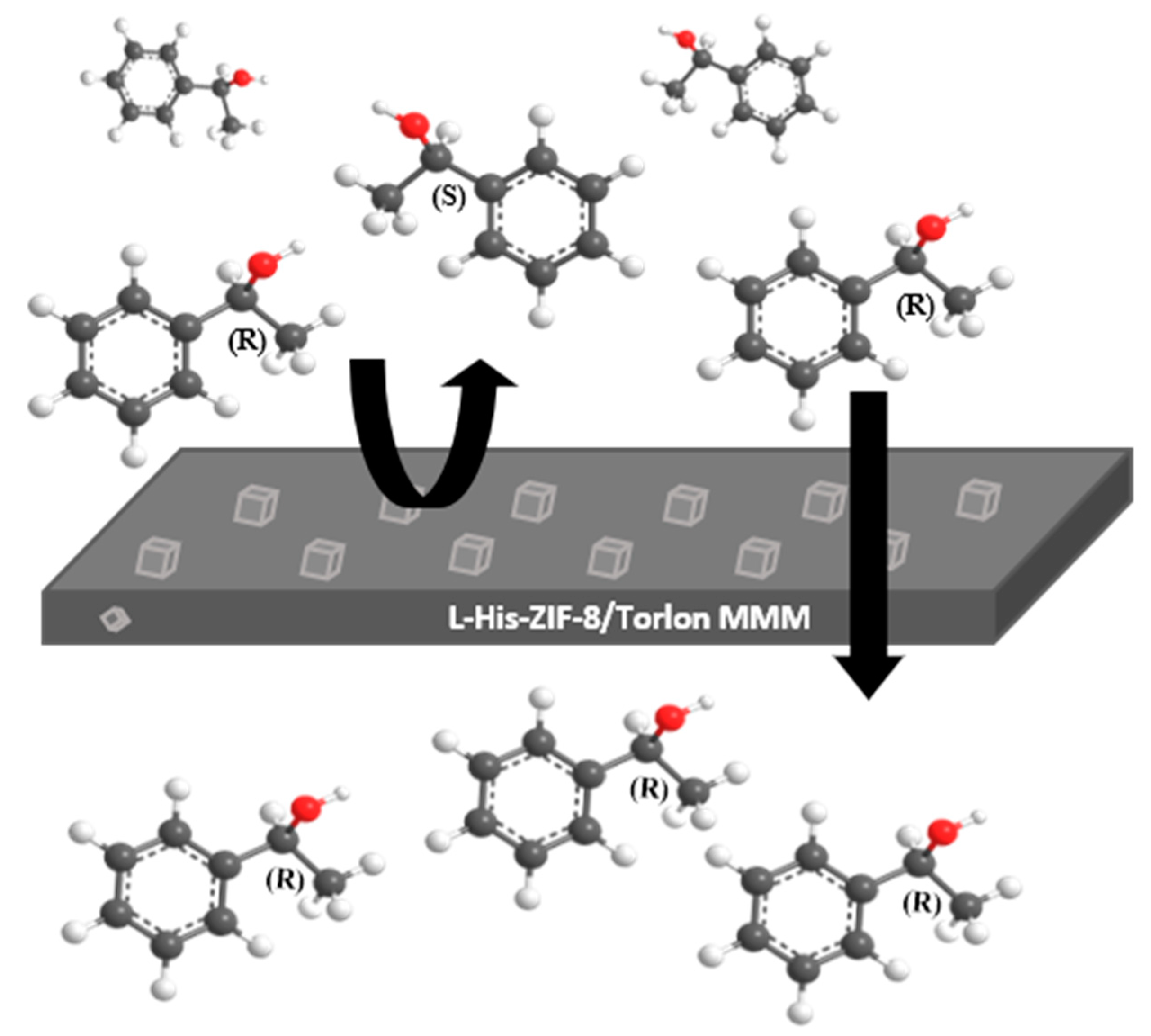
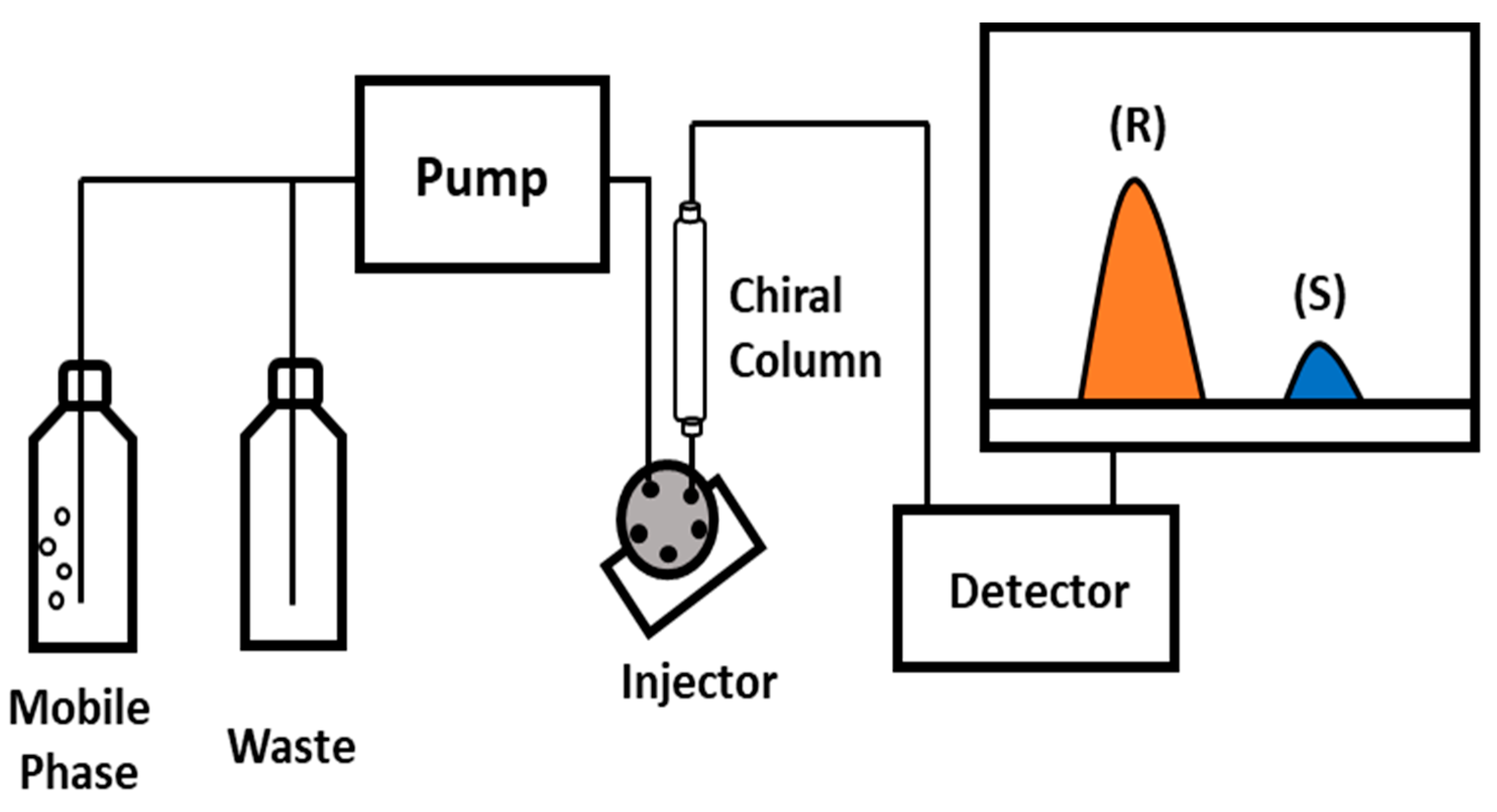
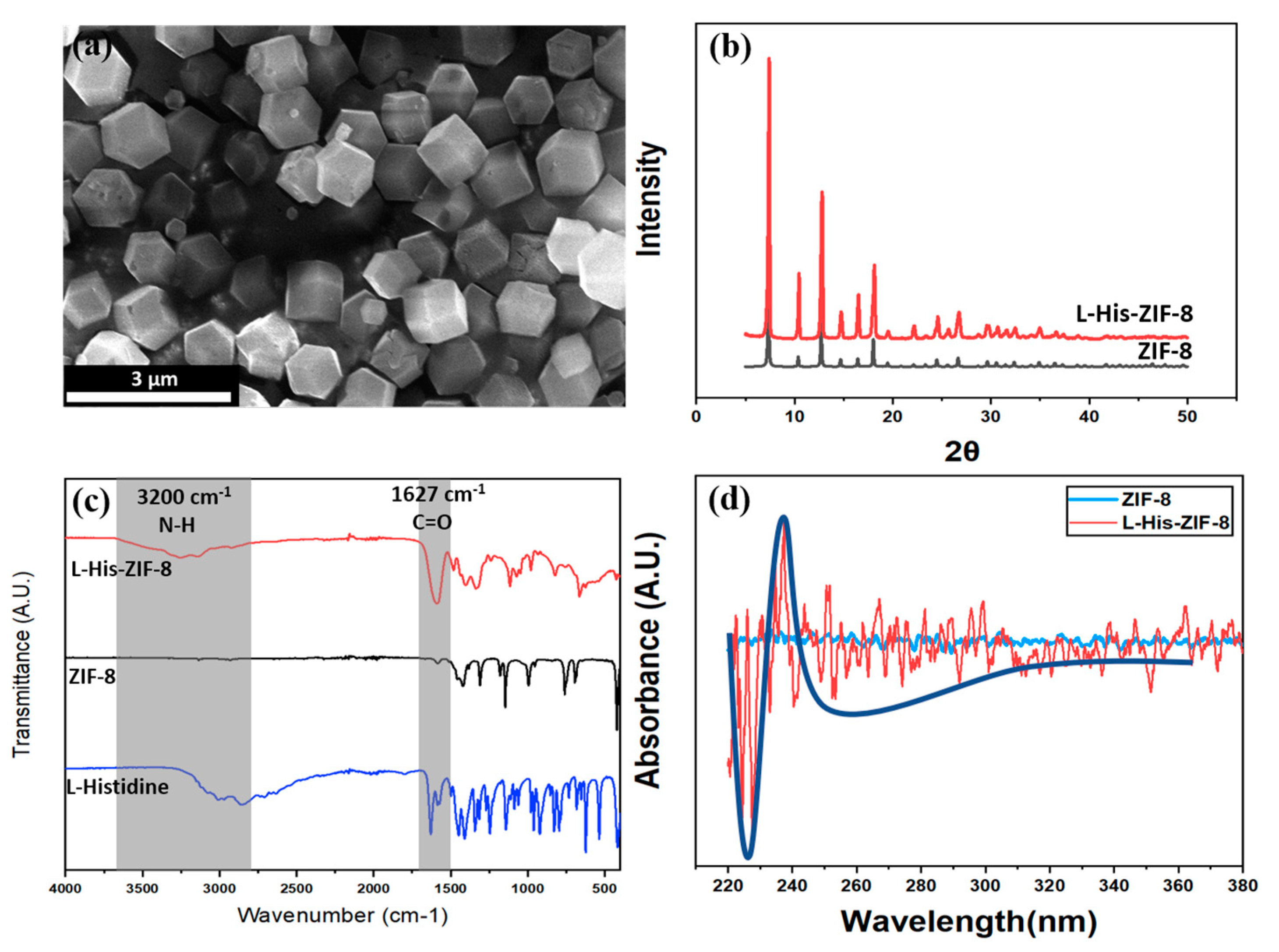
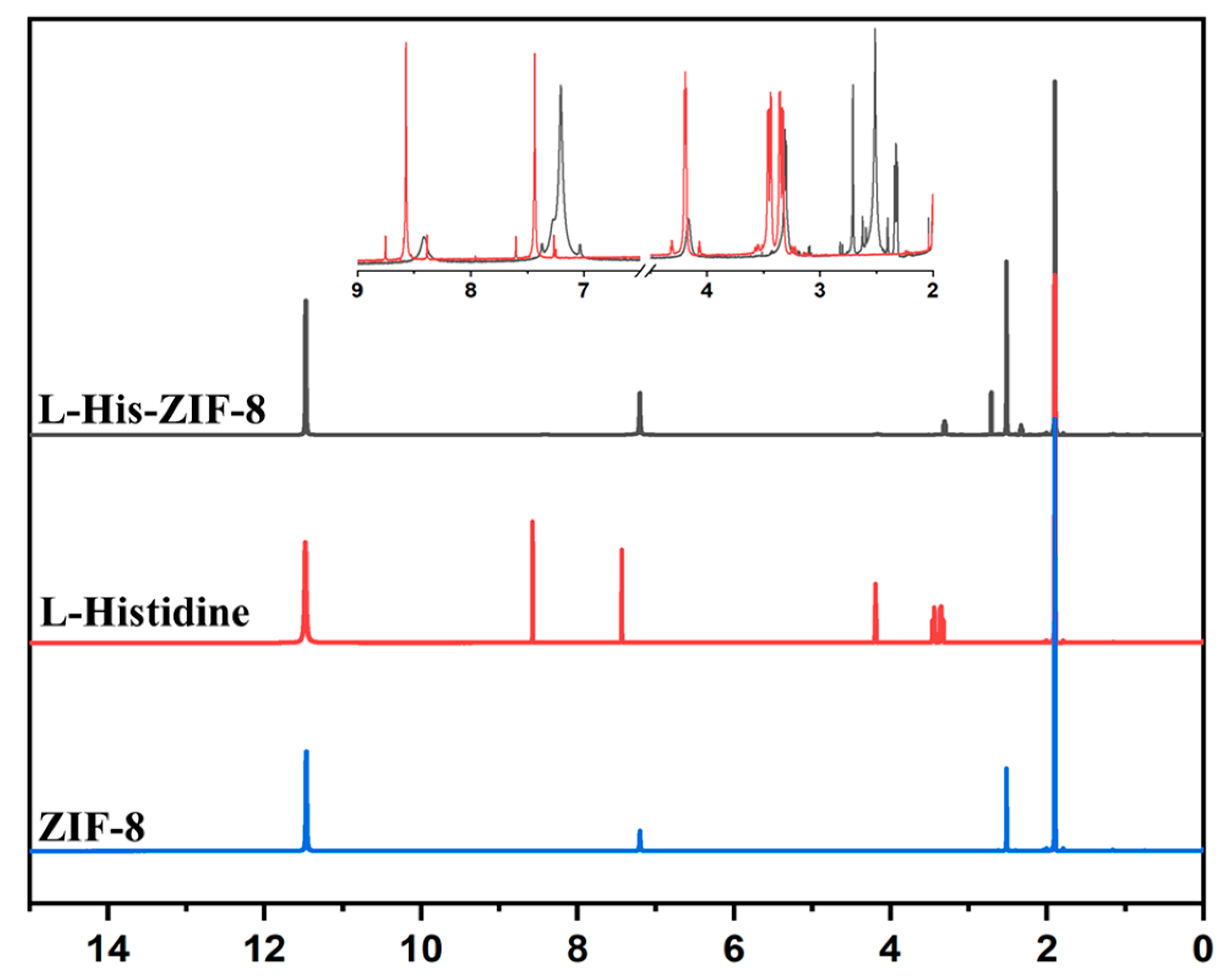
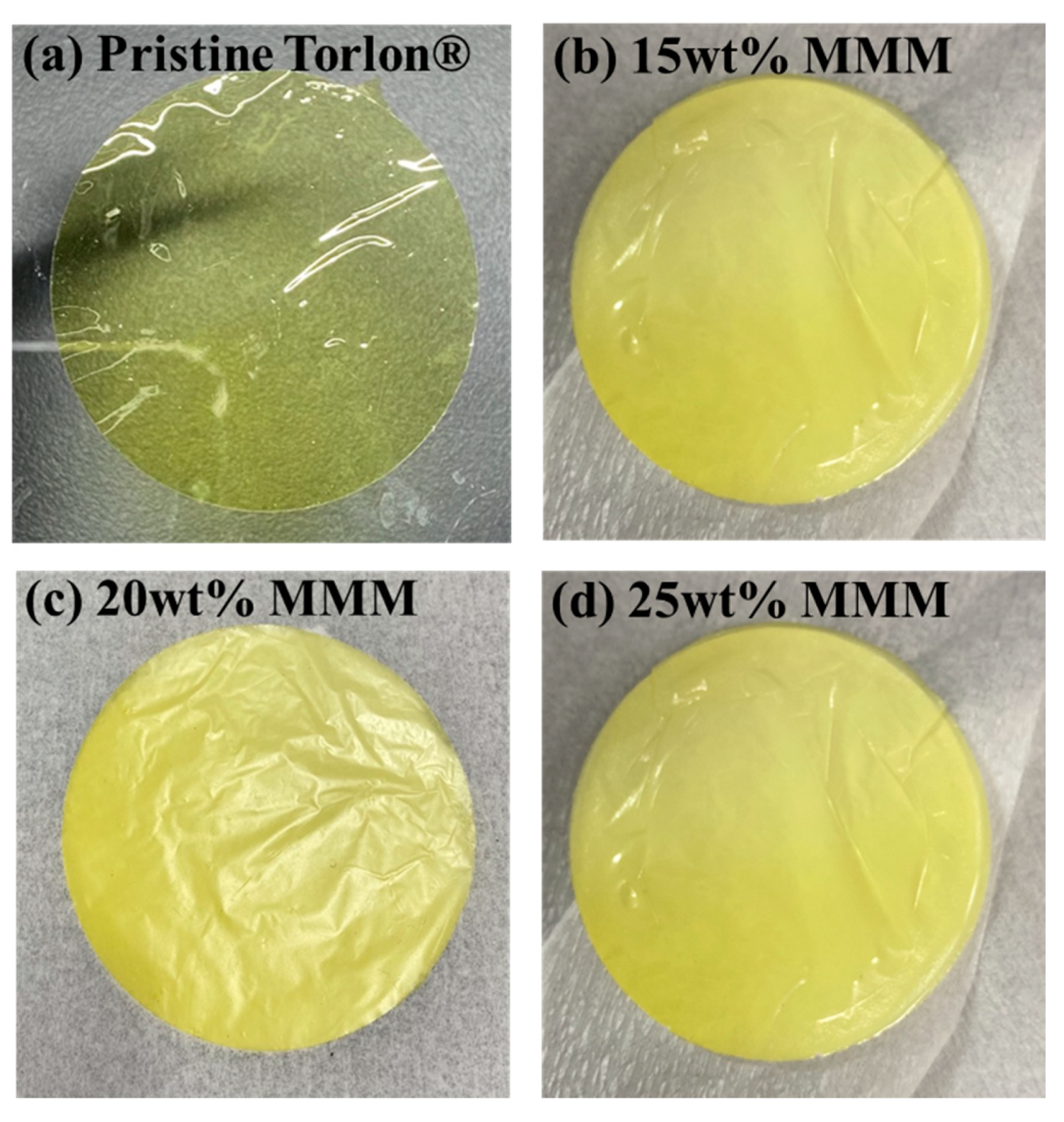
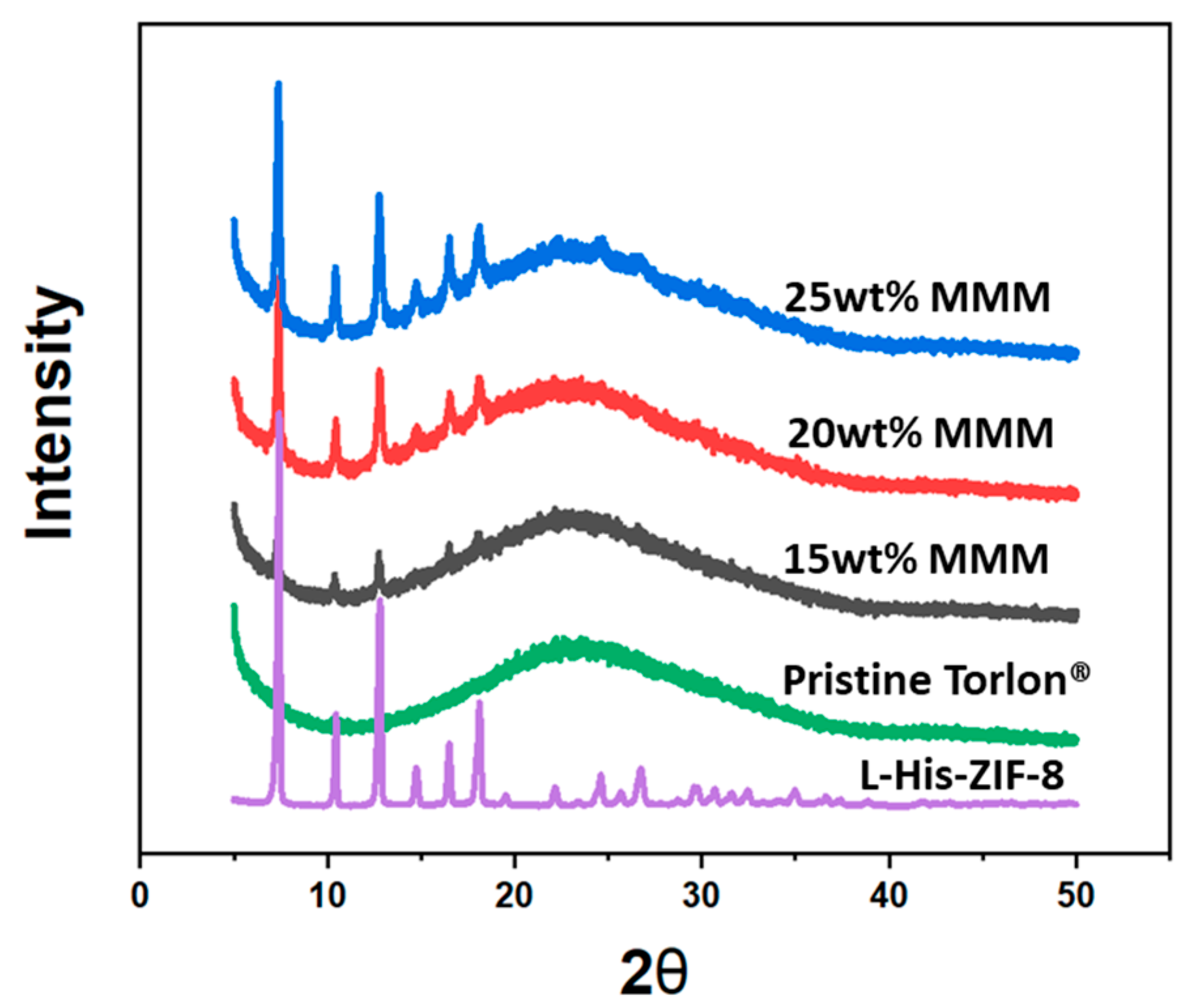
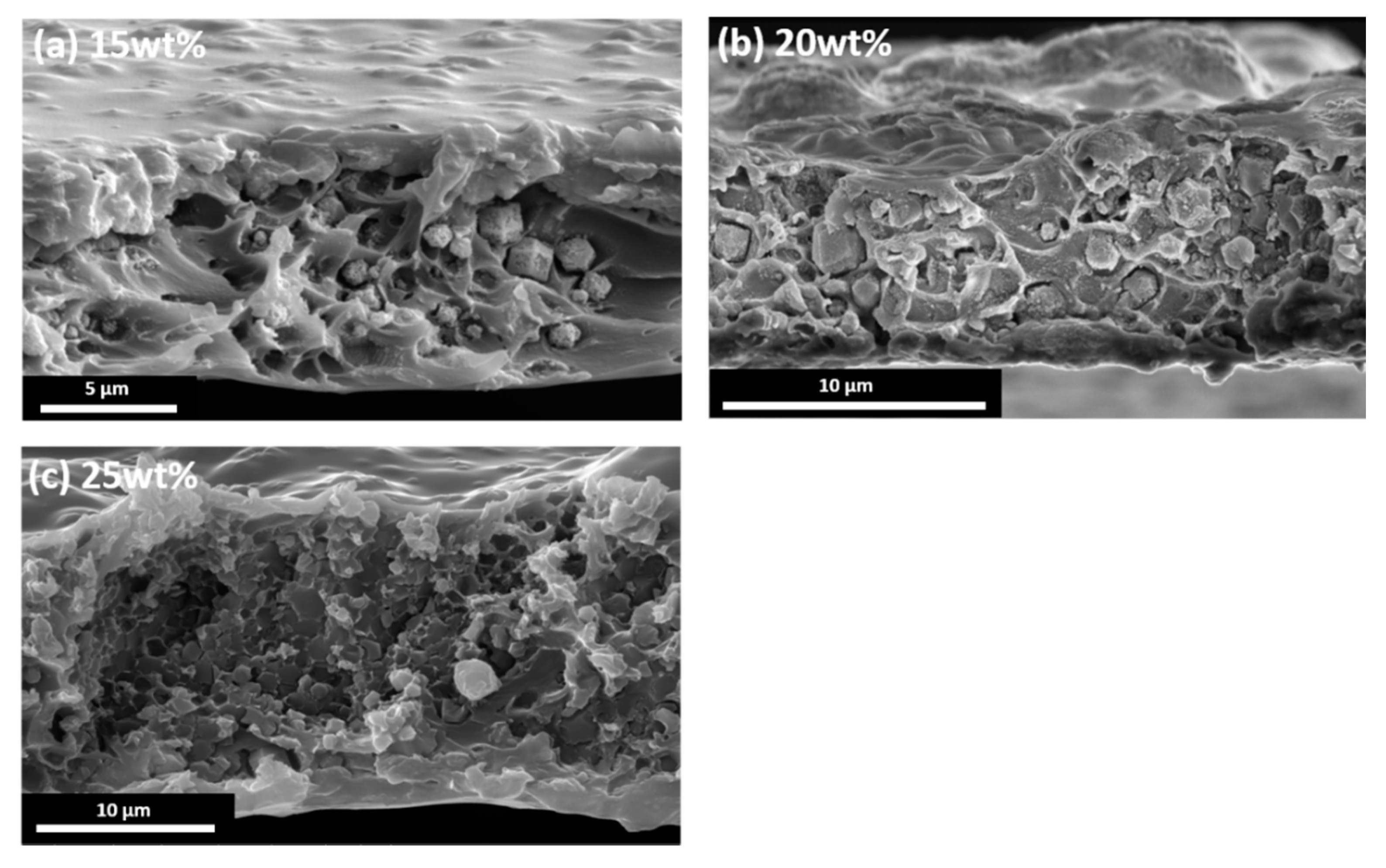
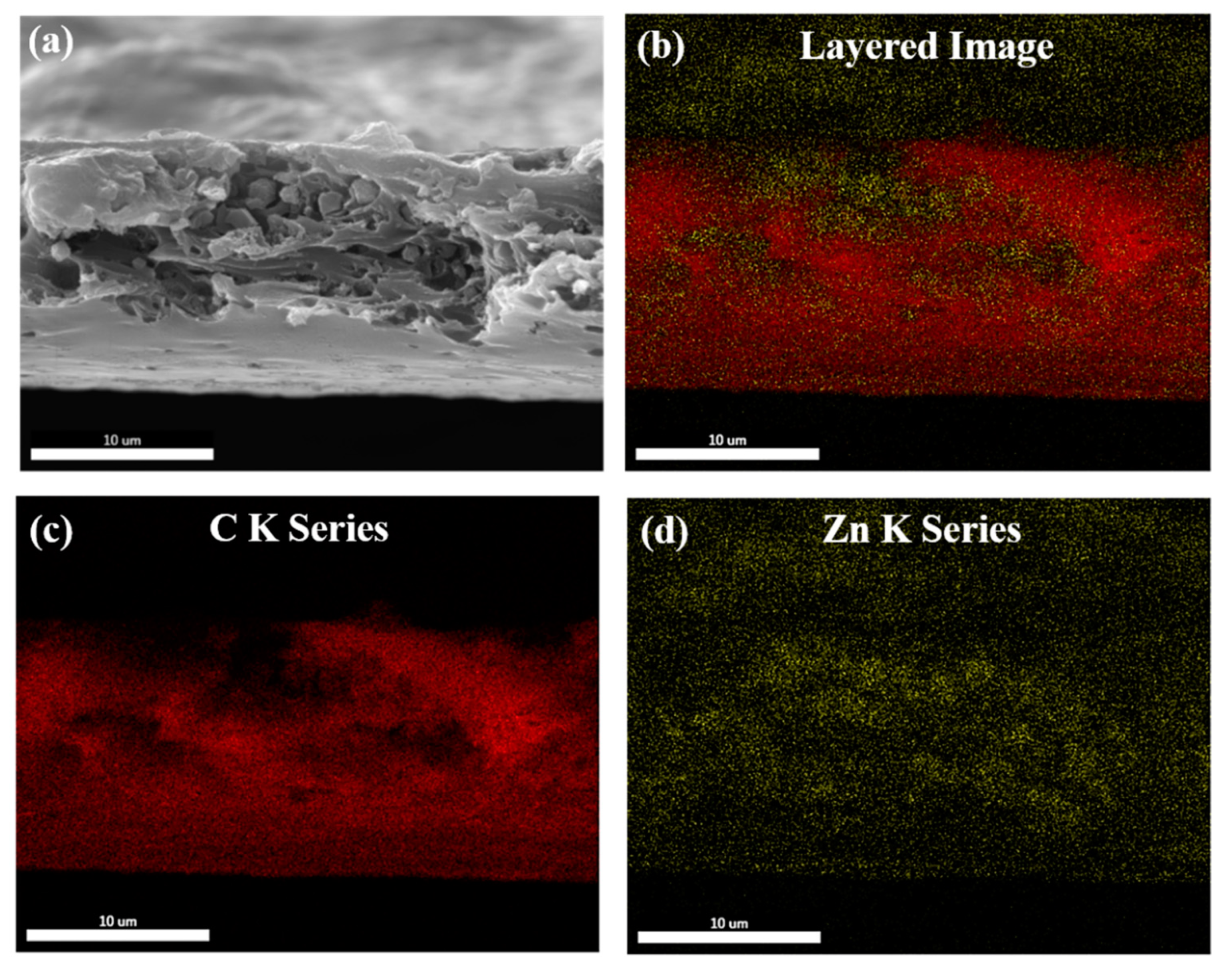

Publisher’s Note: MDPI stays neutral with regard to jurisdictional claims in published maps and institutional affiliations. |
© 2022 by the authors. Licensee MDPI, Basel, Switzerland. This article is an open access article distributed under the terms and conditions of the Creative Commons Attribution (CC BY) license (https://creativecommons.org/licenses/by/4.0/).
Share and Cite
Choi, H.-J.; Koh, D.-Y. Homochiral Metal-Organic Framework Based Mixed Matrix Membrane for Chiral Resolution. Membranes 2022, 12, 357. https://doi.org/10.3390/membranes12040357
Choi H-J, Koh D-Y. Homochiral Metal-Organic Framework Based Mixed Matrix Membrane for Chiral Resolution. Membranes. 2022; 12(4):357. https://doi.org/10.3390/membranes12040357
Chicago/Turabian StyleChoi, Hwa-Jin, and Dong-Yeun Koh. 2022. "Homochiral Metal-Organic Framework Based Mixed Matrix Membrane for Chiral Resolution" Membranes 12, no. 4: 357. https://doi.org/10.3390/membranes12040357
APA StyleChoi, H.-J., & Koh, D.-Y. (2022). Homochiral Metal-Organic Framework Based Mixed Matrix Membrane for Chiral Resolution. Membranes, 12(4), 357. https://doi.org/10.3390/membranes12040357






